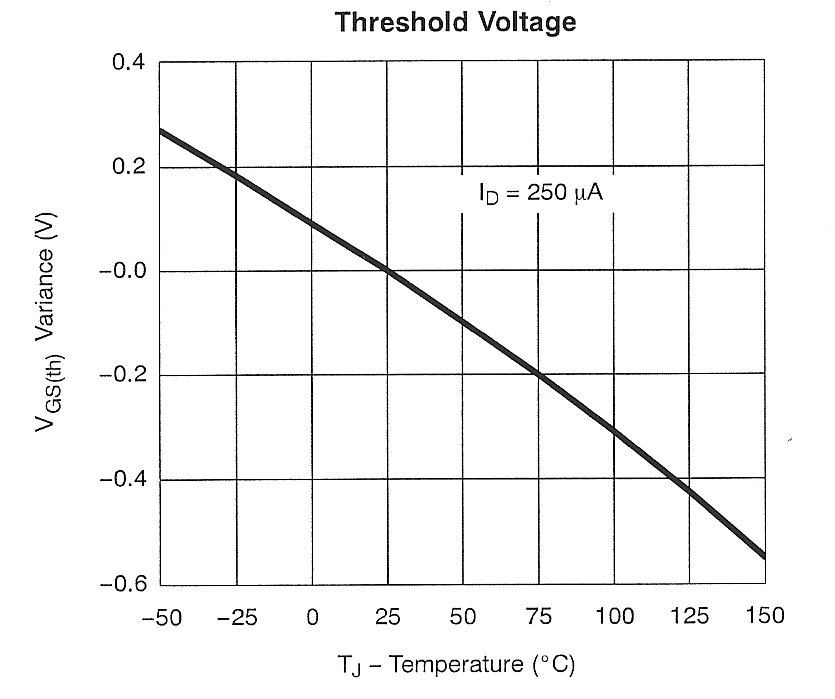|

|
|
|
|
|
|
|
|
Temperature
Sensitive MOSFET |
 |
A while back I was
asked by a company to look into why one of their products failed to operate properly in
cold temperatures. A simplified version of the circuit is shown below. Two n-channel
MOSFETs and a few resistors are wired to form a flip/flop latch circuit. Each time the
pushbutton switch is pressed, the circuit changes state and remains in |
|
that state until another activation of the switch. The circuit is used in
a 3v lithium battery coin cell powered product. The company told me that many of their
devices, when placed in a freezer to simulate operation in cold weather, would not change
state using the pushbutton switch but worked perfectly at room temperature. |
|
|
|
Clearly, the only two active parts in the circuit are the two FETs. The
resistors are quite stable with temperature and even if the C1 capacitor value did change
its value with temperature, it would not have any effect on the circuit operation. What
could change when the FETs get cold? |
|
A quick review of the data sheet for the chosen FETs tells the story. The
TN0201 device has a wide gate-source threshold voltage specification. The spec says that
the threshold voltage could be as high as 3v, which provides no margin when being powered
by a 3v lithium coin cell. Also, when looking at the temperature Vs threshold voltage
curve, the threshold voltage can increase by as much as 20% when the part is really cold.
This sensitivity to temperature is common to all FETs but is often overlooked by the
circuit designer. Also, when cold, the internal resistance of a lithium coin cell
increases. This means that when delivering current in cold weather, the cell voltage can
plunge below 3v. All these factors spell problems with this circuit. |
 |
|
TN0201 Data
Sheet Link: http://www.vishay.com/docs/72671/tn0201k.pdf |
|
|
What is the solution? A MOSFET with a lower threshold voltage spec would
solve the problem. A quick look around on the
www.digikey.com website produces several replacement candidates. I chose the BSN20
device, which is an inexpensive part and has a threshold voltage which should always be
less than 2v. This should provide the needed margin to take care of part variations,
battery voltage droop and the threshold voltage increase with cold temperature. When the
FETs were replaced with the recommended BSN20 part my client reported that all the
products tested at -30C worked perfectly. |
|
BSN20 Data Sheet Link: http://www.nxp.com/documents/data_sheet/BSN20.pdf |
|
|
|